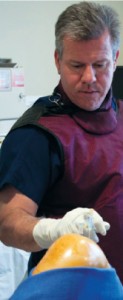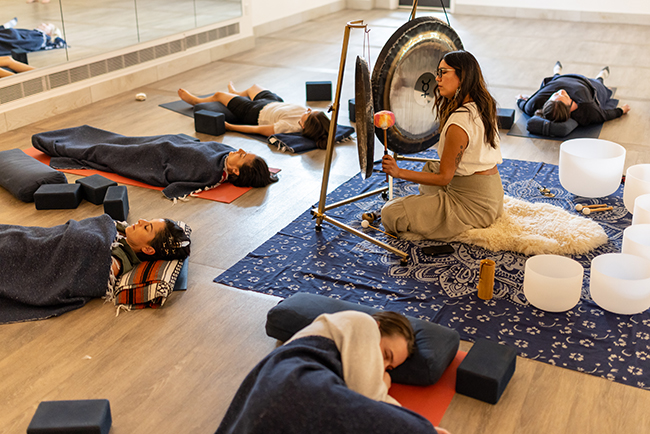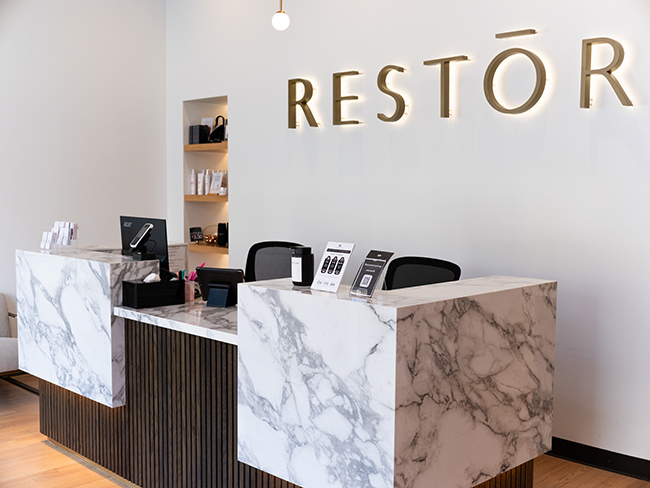Stem Cell Therapies: Tiny Building Blocks of Life
17 Sep 2015
Stem cells have remarkable qualities
Imagine being able to print out a new knee—not the plastic-and-metal kind, but one made of real bone, ligament and cartilage cells. Science fiction? Yes, for now. “But it’s probably not as far off as it sounds,” says Christopher Centeno, M.D., a Broomfield-based specialist in orthopedic regenerative medicine. “It’s on the 20-to-25-year horizon.” In fact, as some stem-cell researchers look into the future, there’s not much they envision the tiny building blocks of life won’t be able to do. Stem cells have remarkable qualities. They are able to divide themselves for long periods of time, sometimes even after inactivity. They are unspecialized, with the potential to develop into many different types of cells, and in some tissues, such as those in the gut, they replicate throughout one’s life to repair and replenish worn-out tissues. (Some cell types, such as nerve, blood and muscle cells, do not normally replicate.)Three Types of Stem Cells
Stem cells have different levels of specialization. “Totipotent” stem cells arise in the first few days after an egg is fertilized, and are able, under the right conditions, to develop into a viable embryo. Within days, these cells become “pluripotent,” able to differentiate and generate all the various cells in the body. “Multipotent” (sometimes called “adult” or “somatic”) stem cells are tissue-specific and can develop the cell types within a particular tissue or organ. Adult brain stem cells, for instance, can generate neurons and glial cells. Blood stem cells, transferred through bone-marrow transplant or collected in umbilical cord blood, are currently the most commonly used stem cells in therapy. Until recently, researchers worked with both embryonic and nonembryonic adult stem cells. But 2006 brought a significant breakthrough: Scientists discovered ways to genetically “reprogram” specialized adult cells, such as those from the skin, to behave like pluripotent stem cells. Most current research focuses on these cells, called induced pluripotent stem cells (iPS cells). Skin biopsies can be taken from the patient being treated, reprogrammed into iPS cells, and then differentiated into adult stem cells corresponding to the tissue in need of regeneration. In addition to skirting ethical controversies, using iPS cells may eliminate the risk of rejection and the need for immunosuppressants.Hair-Raising Results
Dennis Roop, Ph.D., directs the Gates Center for Regenerative Medicine at the University of Colorado’s Anschutz Medical Campus. Roop is preparing to use iPS cells in clinical trials for his research on inherited skin-fragility syndromes, or blistering skin diseases, which can be fatal. The use of iPS cells can induce skin cells to behave like youthful skin stem cells. “You kind of coach them,” Roop explains, by exposing them to factors such as human growth hormone and other chemicals. These factors, scientists have learned, direct the iPS cells to become a specific type of cell, like skin or bone or muscle. This could be particularly useful in treating skin diseases and chronic wounds. Stem cells are proving useful in pharmaceutical testing as well. Gates Center researchers and the University of Colorado Cancer Center are among the first in the U.S. to test drugs that target and destroy cancer stem cells, which are the source of cancer. The therapy has proven effective in treating tumors and blood cancers in clinical trials. Another upcoming Gates Center study with significant potential in treating cancer focuses on removing blood stem cells from a patient before chemotherapy or radiation, growing and expanding those cells, and returning them to the patient’s body to restore blood stem cells that were damaged during the cancer treatment.












